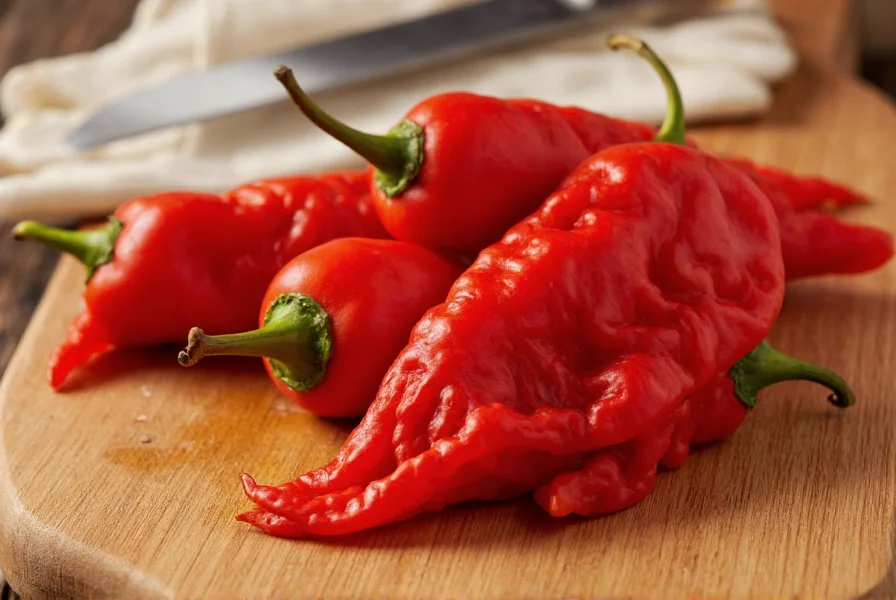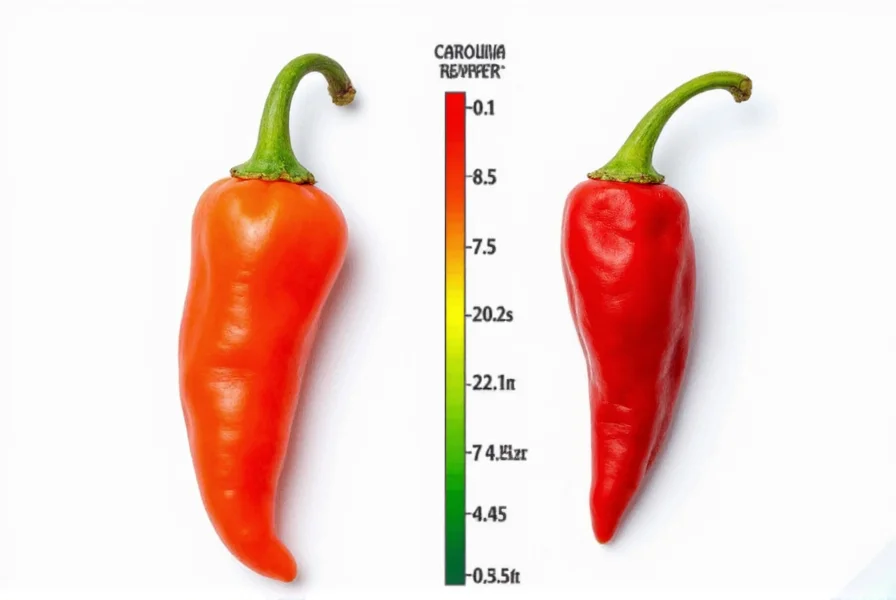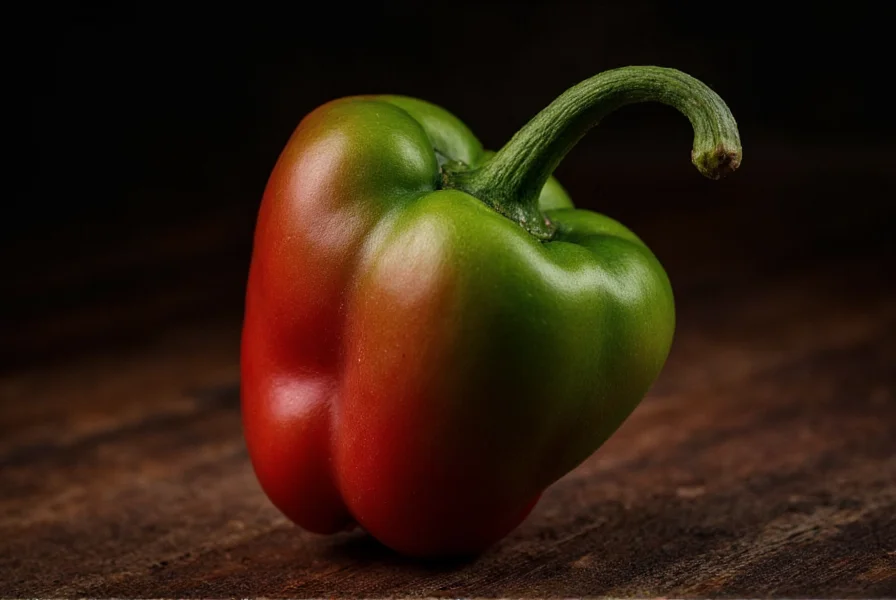The ghost pepper (Bhut Jolokia) measures between 855,000 and 1,041,427 Scoville Heat Units (SHU), with an average rating of approximately 1,000,000 SHU. This places it among the world's hottest chili peppers, though it has been surpassed by newer varieties like the Carolina Reaper.
Understanding the ghost pepper scoville level is essential for anyone working with this intensely hot chili. The Bhut Jolokia, originally from Northeast India, gained global attention when it entered the Guinness World Records in 2007 as the world's hottest pepper—a title it held until 2011. Its heat isn't just a number; it represents a serious culinary challenge that demands respect and proper handling techniques.
What the Scoville Scale Really Measures
The Scoville scale, developed by pharmacist Wilbur Scoville in 1912, measures the concentration of capsaicinoids—the compounds responsible for chili heat. Originally determined through human taste testing, modern measurements use high-performance liquid chromatography (HPLC) for precise capsaicin quantification, then convert these measurements to Scoville Heat Units.
When discussing ghost pepper scoville units range, it's important to understand that heat levels can vary significantly based on growing conditions, soil composition, climate, and even the specific part of the pepper tested. The placenta (white ribs inside the pepper) contains the highest concentration of capsaicin, making it substantially hotter than the flesh.
Ghost Pepper Heat in Context
Placing the ghost pepper scoville rating in perspective helps understand its intensity. Consider these comparisons:
| Pepper Variety | Scoville Heat Units (SHU) | Heat Relative to Jalapeño |
|---|---|---|
| Jalapeño | 2,500-8,000 | 1x |
| Habanero | 100,000-350,000 | 20-40x |
| Ghost Pepper (Bhut Jolokia) | 855,000-1,041,427 | 100-130x |
| Carolina Reaper | 1,400,000-2,200,000 | 180-250x |
| Pepper X | 2,693,000+ (unofficial) | 300x+ |
This ghost pepper scoville level comparison shows why the Bhut Jolokia earned its fearsome reputation. At its peak, a single ghost pepper delivers more than 100 times the heat of a typical jalapeño. When comparing ghost pepper scoville rating to habanero, the ghost pepper is generally 2-3 times hotter than even the hottest habaneros.
Factors Affecting Ghost Pepper Heat Measurement
The ghost pepper scoville units range isn't fixed due to several variables:
- Growing conditions: Stressors like drought or nutrient deficiency can increase capsaicin production
- Geographical origin: Indian-grown Bhut Jolokias often test hotter than those grown elsewhere
- Testing methodology: Different laboratories may produce slightly varying results
- Plant genetics: Natural variation exists between individual plants
Researchers at New Mexico State University's Chile Pepper Institute found that ghost peppers grown under controlled conditions consistently measured around 1,000,000 SHU, while field-grown specimens showed more variation. This explains why you might encounter different ghost pepper scoville heat level reports from various sources.
Safety Considerations When Handling Ghost Peppers
Working with ghost peppers requires serious precautions due to their extreme heat level. The capsaicin concentration in ghost peppers can cause:
- Skin irritation and chemical burns (always wear gloves)
- Respiratory distress when cutting or processing
- Eye damage if touched after handling peppers
- Gastrointestinal distress when consumed

If you experience burning sensations, use dairy products (milk, yogurt) rather than water to neutralize the capsaicin. Water actually spreads the oil, while the casein in dairy binds to capsaicin and helps remove it.
Culinary Applications of Ghost Peppers
Despite their intense heat, ghost peppers offer complex flavor profiles with smoky, fruity notes that make them valuable in culinary applications—when used judiciously. Professional chefs typically use ghost pepper in one of three ways:
- Infused oils: Steeping ghost pepper in oil transfers flavor with controlled heat
- Vinegar extracts: Creating hot sauces where acidity balances the heat
- Finishing spice: Adding minute amounts to dishes just before serving
When exploring ghost pepper scoville level in cooking, remember that less is more. A single seed can transform an entire pot of sauce. Many professional kitchens use specialized equipment to handle these peppers safely and consistently.
Ghost Pepper vs. Carolina Reaper: Setting the Record Straight
Many people still believe the ghost pepper is the world's hottest pepper, but this hasn't been true since 2011. The Carolina Reaper now holds the official Guinness World Record with an average of 1,641,183 SHU—significantly hotter than the ghost pepper's maximum.
Understanding the difference between ghost pepper scoville units range and Carolina Reaper measurements helps set realistic expectations. While ghost peppers deliver intense, immediate heat that builds gradually, Carolina Reapers produce a more complex heat profile with delayed onset but longer duration.

Measuring Your Own Ghost Pepper's Heat
While home testing can't match laboratory precision, you can estimate your ghost pepper's relative heat:
- Compare to known peppers in cooking applications
- Use commercial Scoville test strips (less accurate)
- Observe physical characteristics (smaller, wrinklier peppers often indicate higher heat)
Remember that even within the same plant, individual ghost peppers can vary significantly in their scoville heat level. For serious heat measurement, professional laboratory testing remains the only reliable method.
Frequently Asked Questions
How many scoville units does a ghost pepper have?
Ghost peppers typically measure between 855,000 and 1,041,427 Scoville Heat Units (SHU), with an average around 1,000,000 SHU. This places them significantly hotter than habaneros but less hot than current record-holders like the Carolina Reaper.
Is a ghost pepper hotter than a habanero?
Yes, ghost peppers are substantially hotter than habaneros. While habaneros range from 100,000 to 350,000 SHU, ghost peppers measure between 855,000 and 1,041,427 SHU, making them approximately 2-3 times hotter than even the hottest habaneros.
Can you eat a ghost pepper raw?
Technically yes, but it's not recommended for most people. Eating a raw ghost pepper can cause severe burning sensations, gastrointestinal distress, and in some cases, temporary breathing difficulties. If attempting to eat one raw, start with an extremely small piece and have dairy products available to mitigate the heat.
How long does ghost pepper heat last?
The burning sensation from a ghost pepper typically peaks within 5-10 minutes and can last 20-45 minutes in the mouth. When properly handled, the heat sensation on skin usually subsides within 30-60 minutes with appropriate treatment. Internal effects may last several hours depending on the amount consumed.
Why do ghost peppers have such a high scoville rating?
Ghost peppers evolved high capsaicin concentrations as a defense mechanism against mammals. The specific combination of capsaicinoids in Bhut Jolokia creates an intense, lingering heat that deters animals from eating the peppers while still allowing birds (which don't feel the burn) to disperse the seeds.











 浙公网安备
33010002000092号
浙公网安备
33010002000092号 浙B2-20120091-4
浙B2-20120091-4